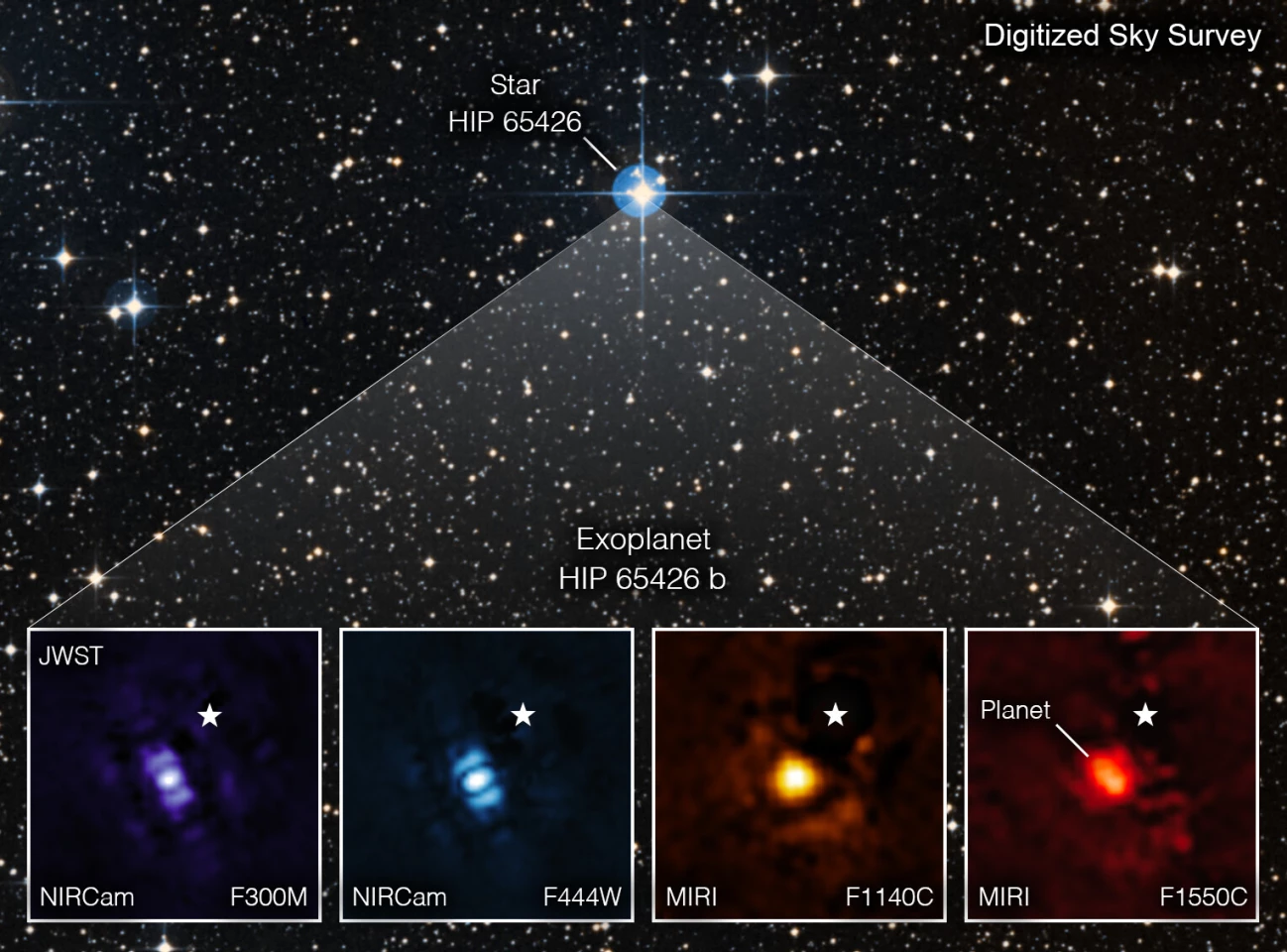The James Webb Space Telescope has snapped its first direct images of an exoplanet. With its uniquely powerful instruments, Webb captures details that other observatories miss, which will help us understand these distant worlds better and potentially find the first signs of extraterrestrial life.
Most exoplanets are detected and studied indirectly through their host star, such as how it wobbles from the gravitational influence as it orbits or how it blocks the light as it passes in front of the star. Directly imaging these worlds is much trickier, since the stars’ intense light washes out the much fainter, smaller planets.
Webb is designed to counter that with an instrument called a coronagraph, which acts like a sunshield to precisely cover the star’s light without obscuring the planet. That, coupled with its mid-infrared cameras and its location in deep space away from any atmospheric interference, helped the telescope image an exoplanet with a new level of detail.
The subject of the image is HIP 65426 b, a gas giant about 385 light-years from Earth. It’s thought to be between 15 and 20 million years old, a relative toddler compared to our middle-aged 4.5-billion-year-old home planet. Its size – between six and 12 times the mass of Jupiter – and its distance from its host star, about 92 times farther out than Earth orbits the Sun, make it a great candidate for Webb’s direct imaging.

The new image is seen in four different bands of infrared light, captured by two instruments, the Near-Infrared Camera (NIRCam) and the Mid-Infrared Instrument (MIRI), which specialize in different wavelengths. NIRCam imaged the planet at wavelengths of 3.0 micrometers and 4.44 micrometers, seen as purple and blue. MIRI captured it at 11.4 and 15.5 micrometers, seen as yellow and red.
The clarity of the new images will allow astronomers to uncover new details about exoplanets. For instance, the team says this new observation allowed them to calculate the mass of HIP 65426 b more accurately, to around 7.1 times that of Jupiter.
This is Webb’s first directly imaged exoplanet, but it sure won’t be its last. After all, doing so was one of the observatory’s main science tasks, and intriguingly, this demonstration indicated that it’s performing as much as 10 times better at the job than it was expected to. With this, plus its ability to characterize the composition of exoplanet atmospheres, James Webb will grant us an unprecedented understanding of alien worlds in the coming years, which may include the first signs of extraterrestrial life.
A paper describing the work has been submitted to the American Astronomical Society’s journals, and is currently available in preprint form on ArXiv.
Source: NASA





